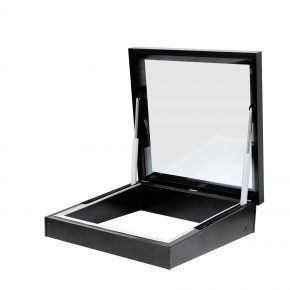
Sprayed and injected polyurethane foam systems are top priority
The average spend per household on housing, fuel and electricity has risen substantially at £68
Domestic and commercial buildings can easily be insulated with cavity wall insulation, loft insulation and draught proofing. This should have an immediate effect on comfort within the building and, if the thermostat can be turned down by a degree or so, financial savings will soon materialise. When polyurethane foam is used for insulation purposes this product has superior insulation values to many other insulants which should result in significant savings. With the Government’s Green Deal scheme underway this has removed the inability to purchase insulation, providing a loan to householders with the repayments being made on electricity bills. There should be a reduction on the electricity bill due to the savings made from the installation and the loan is taken from these savings. The Green Deal loan is attached to the property and its energy bills, rather than the occupier.
The Green Deal will become more straightforward for families who want to improve their homes and benefit from lower bills. The Government announced impending changes to the scheme on 2 December, 2013 which will take effect during 2014 to simplify the application process.
The use of sprayed and injected polyurethane foam can be applied to roofs, walls and many other areas of the building substrate. The material is a two-component, chemically modified polyurethane foam which achieves superior U-value and air-permeability results. Systems can be applied to various depths and have K-values in the range of 0.025 to 0.028W/mK. The installation prevents cold bridging, a common problem when installing other insulation materials. Thermal bridging needs to be taken into account when meeting Building Regulations.
The use of sprayed and injected polyurethane foam can be applied to roofs, walls and many other areas of the building substrate
For wall insulation, injected polyurethane foam can be used in the cavity, offering a superior performing insulant which also helps to bond the inner and outer leaves, providing strength to the building. This is particularly useful where Wall Tiles are failing in existing houses. Polyurethane foam is resistant to flooding and often preferable over other materials which may have decreased insulation values once they are wet. These systems are approved under BBA certification for masonry cavity wall constructions in all exposure zones.
In situations where housing is classed as hard-to-treat, the installation of injected polyurethane foam may be the solution. According to the Centre for Sustainable Energy, as many as 5.8 million properties in the UK have cavity walls that are classified as hard-to-treat. For example, properties with narrow cavities, stone cavities, or of metal frame or timber framed construction, can be insulated with injected polyurethane.
Higher market prices for insulated homes and commercial buildings can often be achieved as buying trends increasingly favour the more energy efficient properties. This situation was highlighted by the Department of Energy and Climate Change in its research entitled An investigation of the effect of EPC ratings on house prices, published in June 2013. The research demonstrated that the sale price achieved was higher where properties had Energy Performance Certificates which were one or two bands higher than similarly sized dwellings. The average increase across England was an increase of 14%.
Builders and developers who incorporate energy efficiency within their unique selling proposition can add value to their new build portfolio. Spray applied and injected polyurethane foam can also be added to existing properties to bring these properties up to today’s standards.
Domestic and commercial buildings can easily be insulated with cavity wall insulation, loft insulation and draught proofing
The British Urethane Foam Contractors Association (BUFCA) is the national trade association representing skilled installers who are expert in the application of sprayed or injected polyurethane foam. When choosing members, house builders and developers can be sure of achieving the highest standards of quality and service. A 25-year insurance backed BUFCA warranty is in place for cavity wall insulation installations.
BUFCA installer members have to adhere to the association’s Code of Professional Practice which endeavours to maintain high standards of quality and service to protect customers and the industry’s credibility.
Latest news

23rd August 2024
MCRMA counts down to 2024 technical conference
The MCRMA, the industry association dedicated to the metal cladding and roofing sector, is to hold a members’ technical conference in September.
Posted in Aluminium Products, Articles, Building Associations & Institutes, Building Industry Events, Building Industry News, Building Products & Structures, Building Systems, Cladding, Curtain Walling, Exhibitions and Conferences, Facades, Restoration & Refurbishment, Retrofit & Renovation, Roofs, Seminars, Steel and Structural Frames, Walls
23rd August 2024
New Sales Manager for Electrical Wholesale and Merchants Appointed at Vortice
Experienced ventilation expert Tom Hemming has been appointed by Vortice as National Sales Manager for Electrical Wholesale and Merchants.
Posted in Air Conditioning, Articles, Building Industry News, Building Products & Structures, Building Services, Facility Management & Building Services, Heating, Ventilation and Air Conditioning - HVAC, Recruitment, Retrofit & Renovation
22nd August 2024
A focus on SWA member - Govette Windows
SWA member Govette Windows has been manufacturing steel windows, doors (and more) from its factory for almost 30 years.
Posted in Articles, Building Associations & Institutes, Building Industry News, Building Products & Structures, Building Systems, Doors, Glass, Glazing, Restoration & Refurbishment, Retrofit & Renovation, Steel and Structural Frames, Windows
21st August 2024
The sky’s the limit with the introduction of Roof Maker’s one-click automatic rooflight
Roof Maker, the manufacturer of world-class rooflights, has given hard to reach spaces a lease of life following the launch of a new electric-powered rooflight.
Posted in Aluminium Products, Articles, Building Industry News, Building Products & Structures, Building Services, Building Systems, Glass, Glazing, Innovations & New Products, Lighting, Restoration & Refurbishment, Retrofit & Renovation, Roofs, Windows
 Sign up:
Sign up: